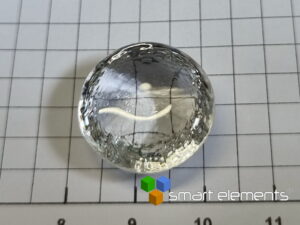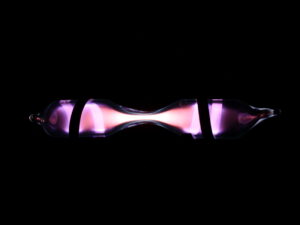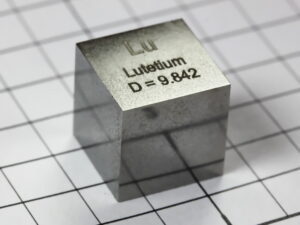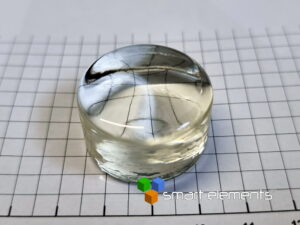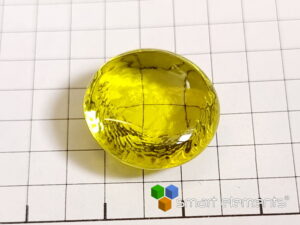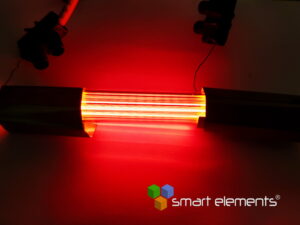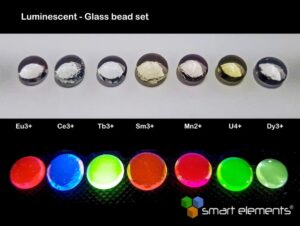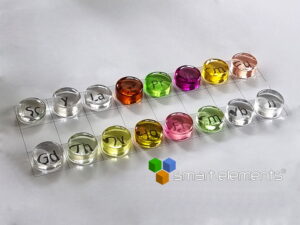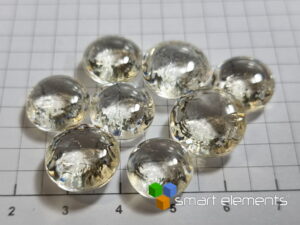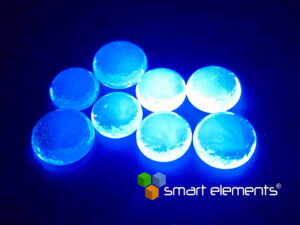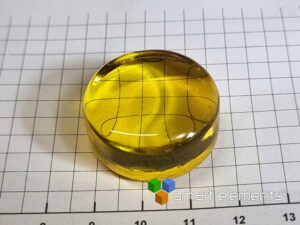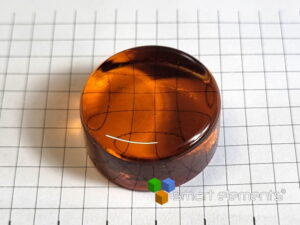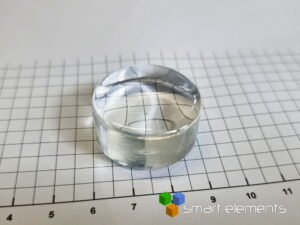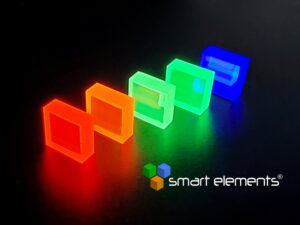Phosphate glass
Phosphate glasses are glass materials based on phosphorus pentoxide (P2O5) with some added chemical components. They are used as laser gain media – both in bulk lasers and in the form of optical fibers. One of their primary advantages is their very high solubility for rare earth ions (→ rare-earth-doped laser gain media) such as erbium (Er3+), ytterbium (Yb3+) and neodymium (Nd3+). This means that high concentrations of laser-active rare earth ions can be incorporated into phosphate glasses without detrimental effects such as clustering, which could degrade the performance via quenching effects.
Phosphate glasses have a very low glass transition temperature, typically below 400 °C. Therefore, phosphate fiber ends melt relatively easily when being heated in high-power operation. Special care is therefore required for pump injection when realizing high-power fiber lasers and amplifiers with phosphate glasses.
Phosphate glasses exhibit a much lower optical damage threshold and a lower thermal conductivity than silica glasses.
